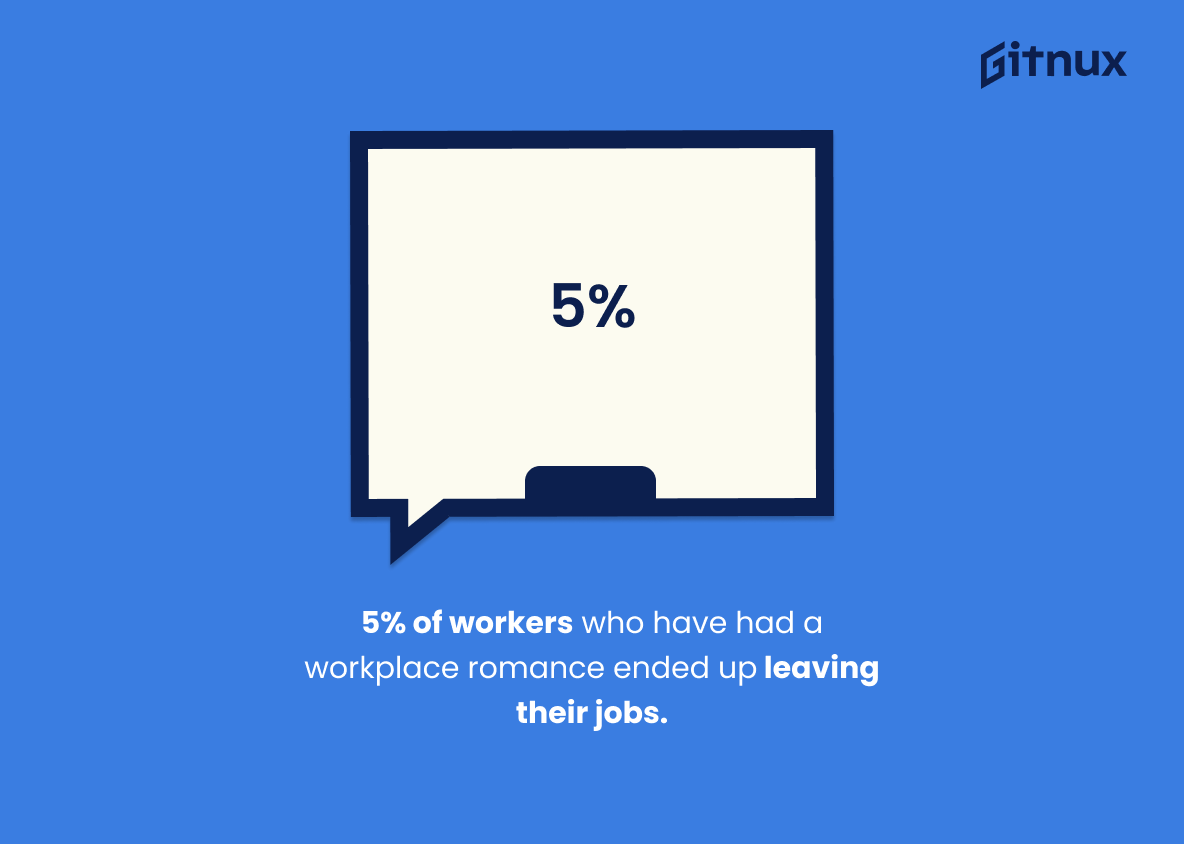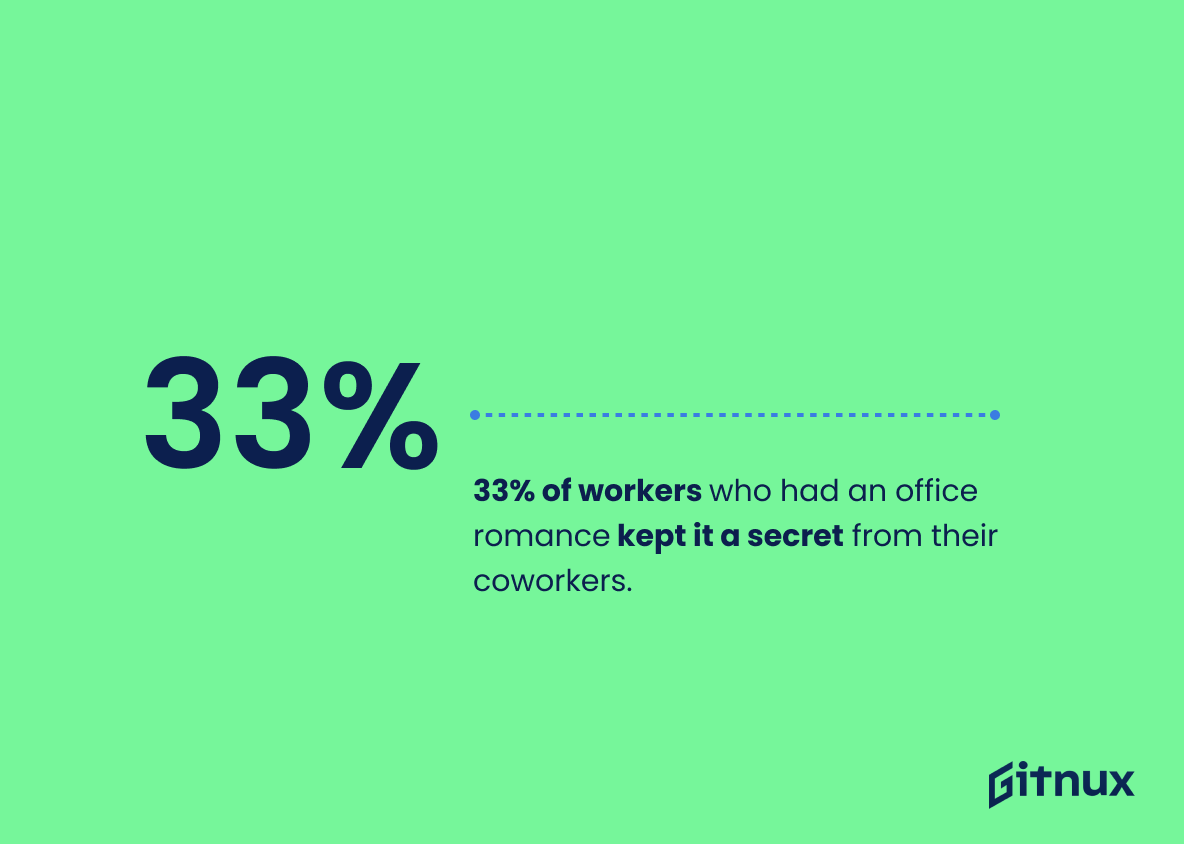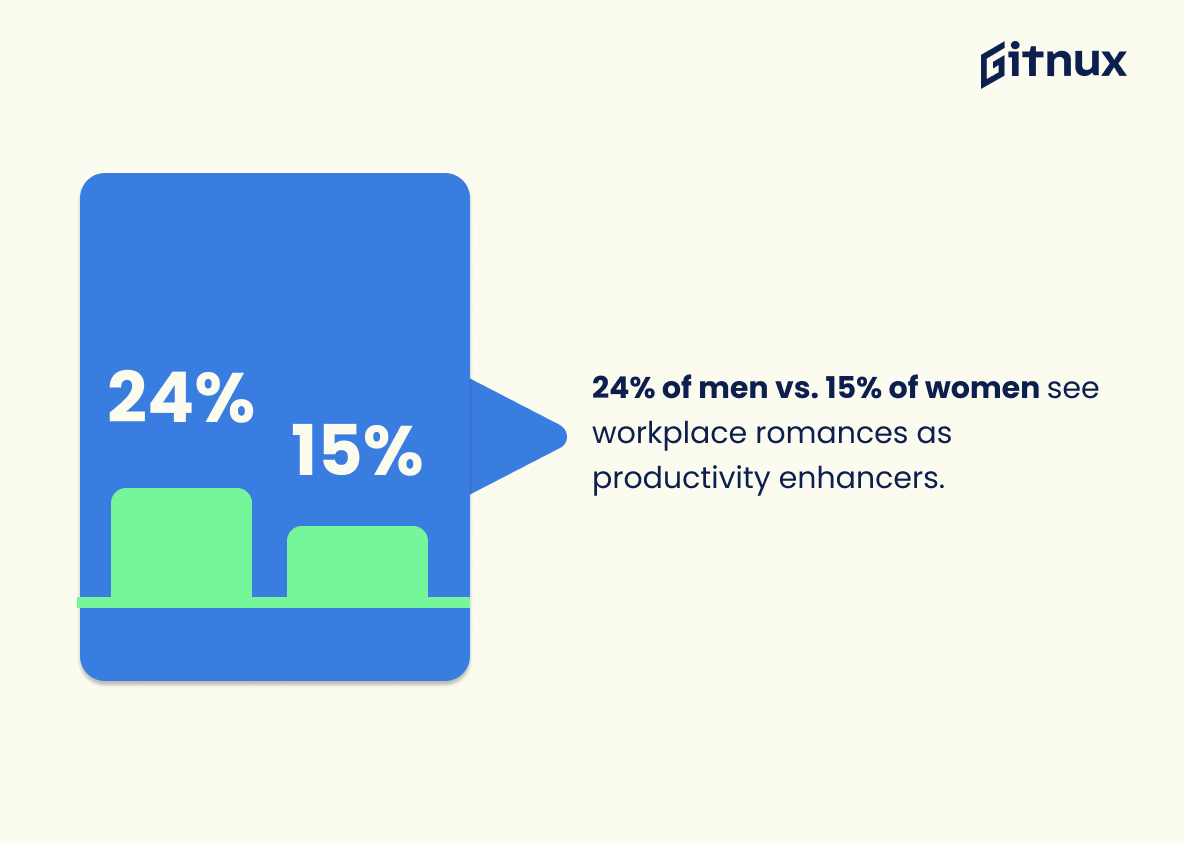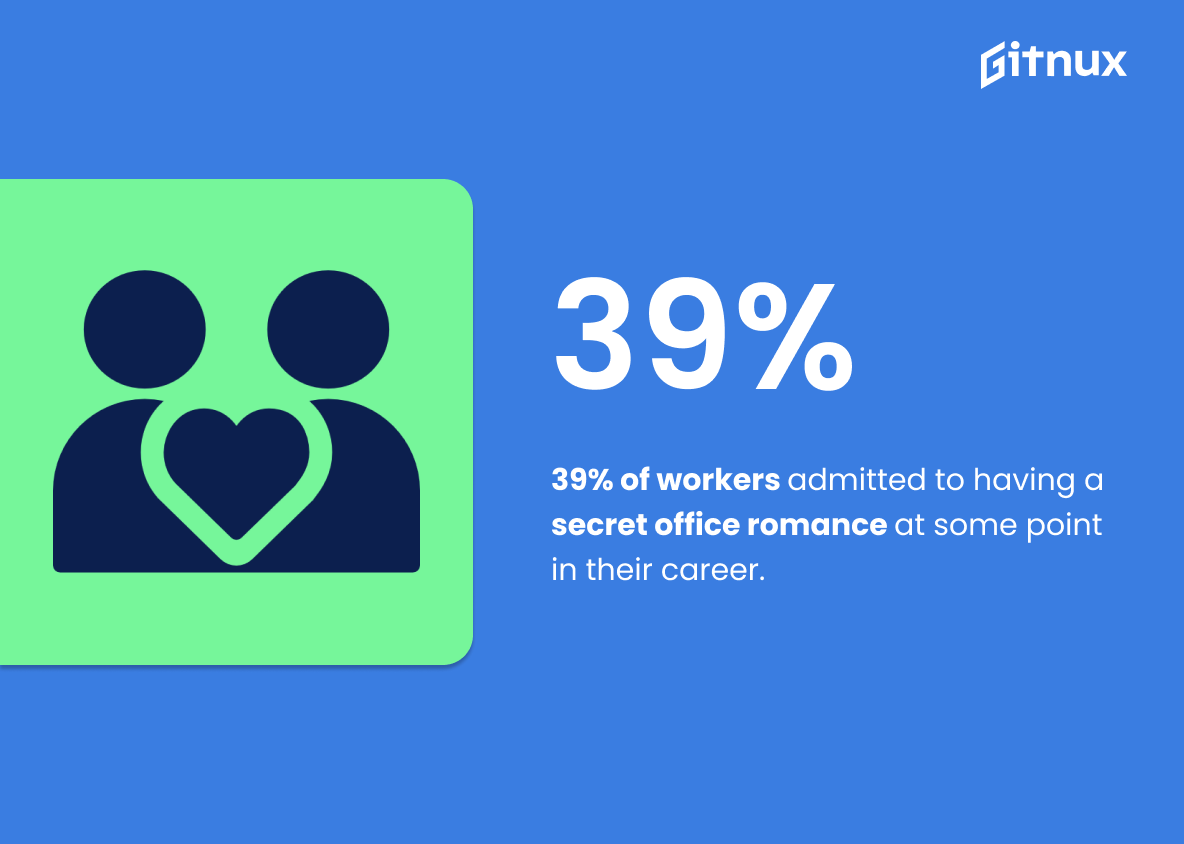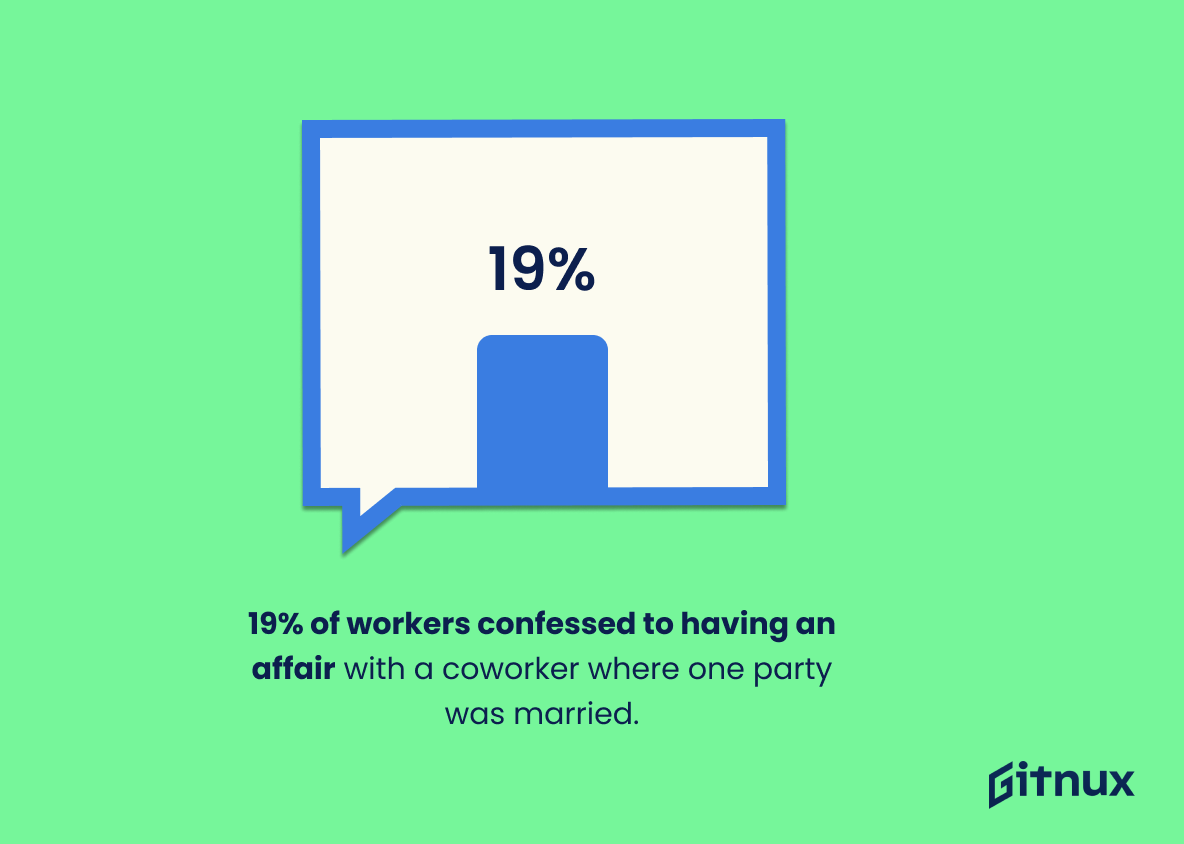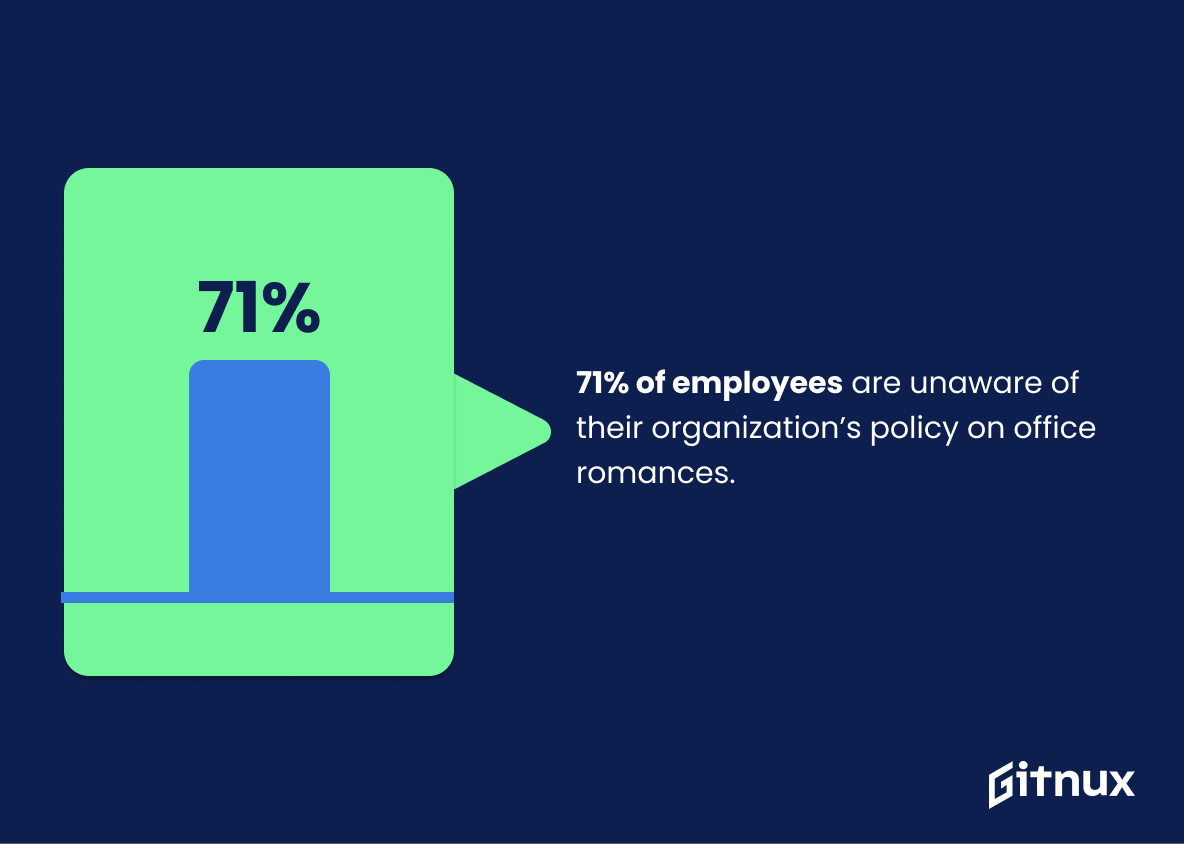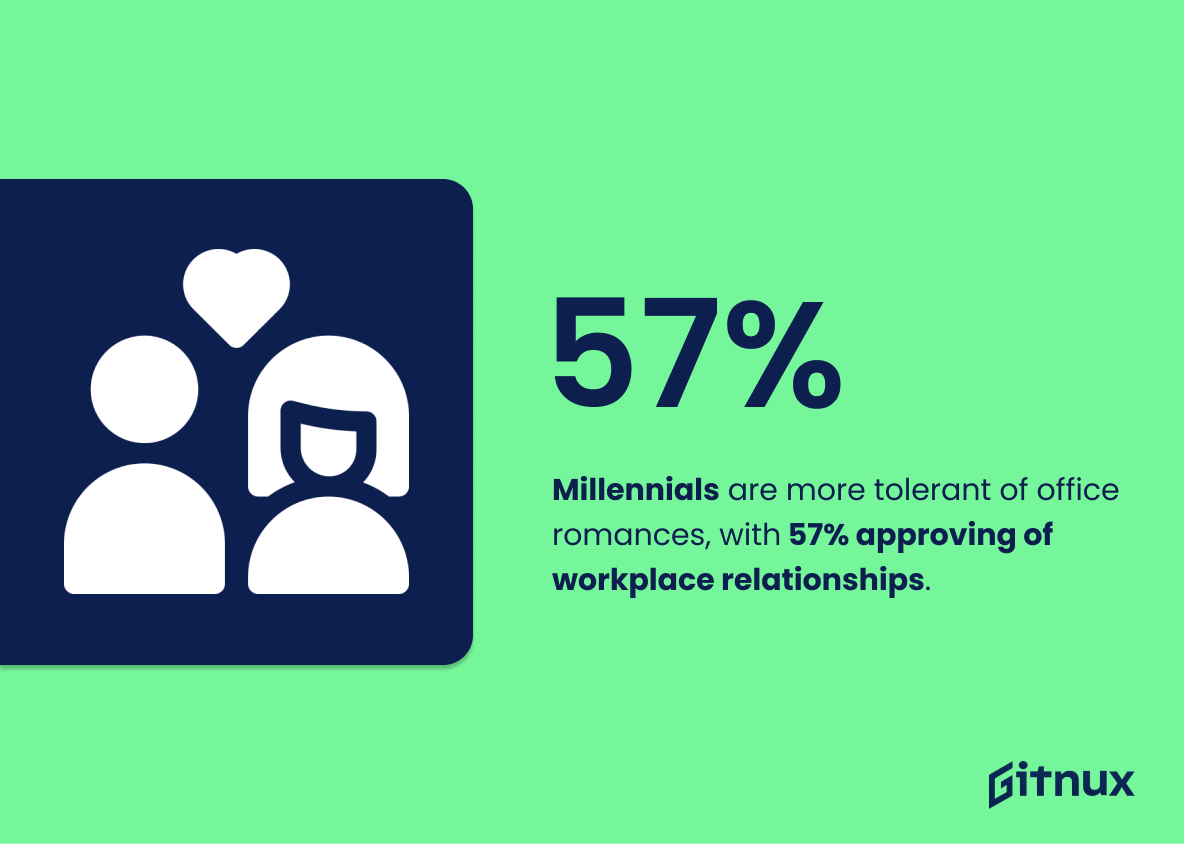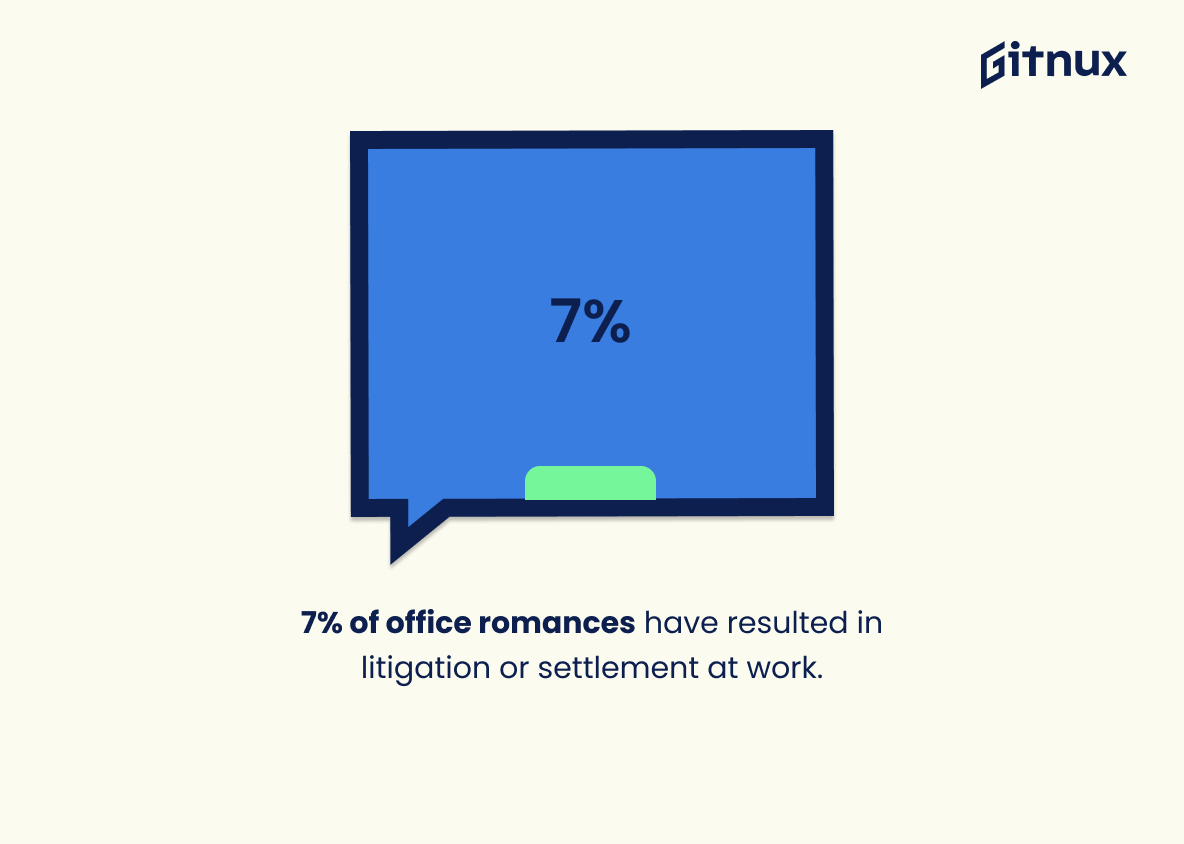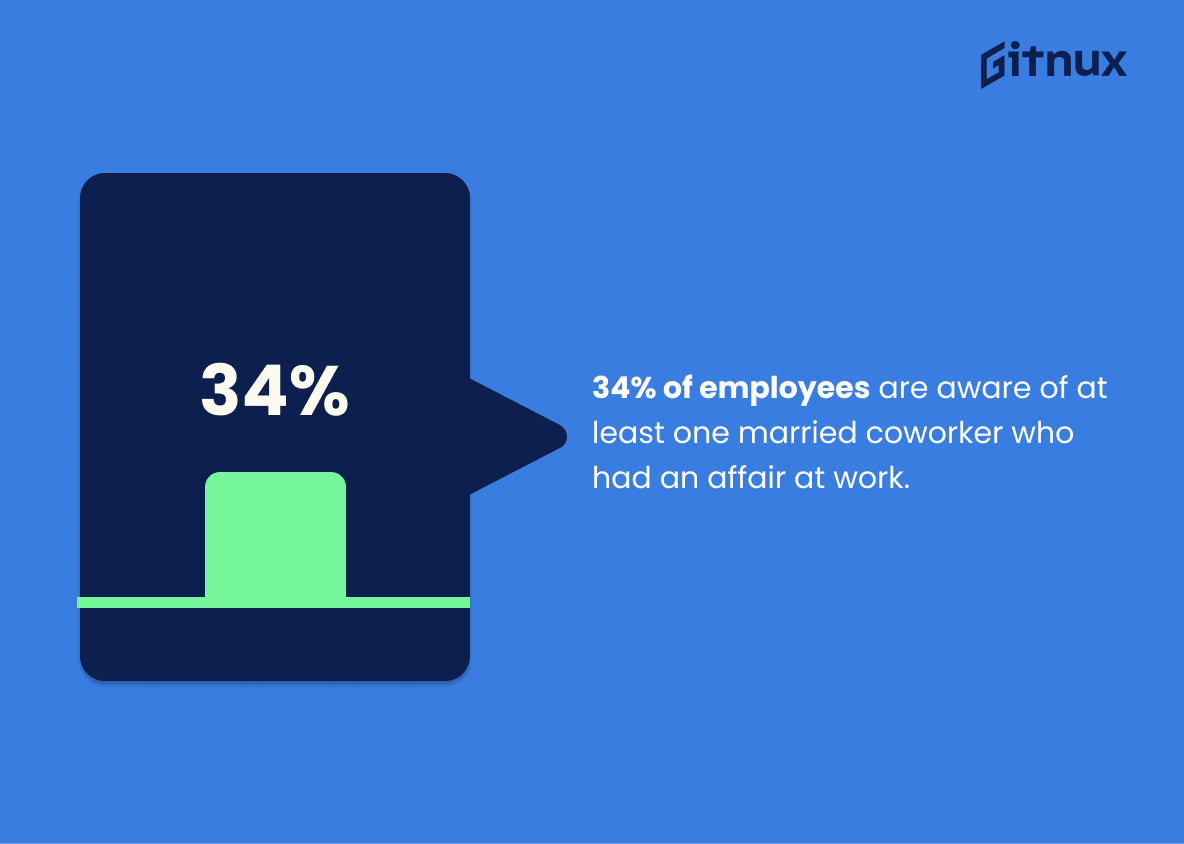Workplace romances are a common occurrence in the modern workplace. From supervisors and higher-ranking individuals to married coworkers, office relationships can take many forms. But what do statistics say about these types of relationships?
In this article, we will explore 20 different workplace romance statistics from reliable sources that provide insight into how often they occur, who is involved, and their potential consequences.
Workplace Romance Statistics Overview
37% of office romances involve a supervisor or higher-ranking individual.
This statistic is significant in the context of workplace romance statistics as it highlights the potential power imbalance between those involved in office romances. It is important to consider the implications of such an imbalance, as it could lead to issues such as favoritism, harassment, and other forms of discrimination.
5% of workers who have had a workplace romance ended up leaving their jobs.
This statistic is a telling indication of the potential consequences of workplace romances. It suggests that, for some, the fallout of a workplace romance can be so severe that it leads to leaving their job. This is an important factor to consider when discussing workplace romances, as it highlights the potential risks involved.
33% of workers who had an office romance kept it a secret from their coworkers.
This statistic is a telling indication of the stigma that still surrounds workplace romances. It suggests that many workers feel the need to keep their relationships hidden, likely out of fear of judgement or potential repercussions from their colleagues. This statistic is a reminder that, despite the prevalence of workplace romances, there is still a need for greater acceptance and understanding of such relationships.
24% of men believe workplace romances improve productivity, while only 15% of women think the same.
This statistic is significant in the context of workplace romance statistics because it reveals a disparity between the genders in terms of their views on the potential benefits of workplace romances. It suggests that men are more likely to view workplace romances as having a positive effect on productivity, while women are more likely to be skeptical of the idea. This could be indicative of a larger gender gap in the workplace, and could be an important factor to consider when discussing workplace romances.
17% of respondents had engaged in a workplace romance with a married coworker.
This statistic is a telling indication of the prevalence of workplace romances involving married coworkers, and thus serves as an important reminder of the potential consequences of such relationships. It highlights the need for employers to be aware of the risks associated with workplace romances, and to take steps to ensure that their employees are aware of the potential consequences of engaging in such relationships. Furthermore, it serves as a warning to those considering engaging in a workplace romance with a married coworker, as it demonstrates the potential for serious repercussions.
39% of workers admitted to having a secret office romance at some point in their career.
This statistic is a telling indication of the prevalence of workplace romances, showing that almost two-fifths of workers have experienced one at some point in their career. It is an important statistic to consider when discussing the topic of workplace romances, as it provides insight into the frequency of such relationships.
19% of workers confessed to having an affair with a coworker where one party was married.
This statistic is a stark reminder of the potential consequences of workplace romances. It highlights the fact that, even in a professional setting, affairs can occur and have a lasting impact on the lives of those involved. It serves as a warning to those considering engaging in a workplace romance, as it demonstrates the potential risks of such a relationship.
45% of employees feel that workplace romances are not appropriate, even if they are kept outside of the office.
This statistic is significant in the context of a blog post about Workplace Romance Statistics because it provides insight into the attitudes of employees towards workplace romances. It shows that a majority of employees do not feel that workplace romances are appropriate, even if they are kept outside of the office. This information can be used to inform employers and employees of the potential risks associated with workplace romances and help them make informed decisions.
71% of employees are unaware of their organization’s policy on office romances.
This statistic is a telling indication of the need for greater communication and education around workplace romance policies. It suggests that many employees are unaware of the potential consequences of engaging in office romances, and that organizations should take steps to ensure that their policies are well-known and understood.
55% of HR professionals believe that romantic relationships have a negative impact on team dynamics in the workplace.
This statistic is a powerful indicator of the potential risks associated with workplace romance. It serves as a warning to employers and employees alike that romantic relationships in the workplace can have a detrimental effect on team dynamics. By highlighting this statistic in a blog post about workplace romance statistics, readers can gain a better understanding of the potential consequences of engaging in workplace romance.
Millennials are more tolerant of office romances, with 57% approving of workplace relationships.
This statistic is a telling indication of the changing attitudes of Millennials towards workplace relationships. It shows that the younger generation is more open to the idea of office romances, which could be a sign of a shift in the way people view workplace relationships. This could be an interesting point to explore in a blog post about Workplace Romance Statistics, as it could provide insight into the changing dynamics of the modern workplace.
7% of office romances have resulted in litigation or settlement at work.
This statistic is a stark reminder of the potential consequences of office romances. It serves as a warning to those considering entering into a workplace romance, that there is a real risk of litigation or settlement at work. It is a reminder that workplace romances should be taken seriously and handled with caution.
29% of workplace romances are long-term, meaning they last more than 1 year.
This statistic is significant in the context of workplace romance statistics as it demonstrates that, despite the potential risks associated with such relationships, a significant portion of them are able to stand the test of time. This indicates that workplace romances can be successful and long-lasting, providing a source of hope for those considering such a relationship.
34% of employees say they are aware of at least one married coworker who has had an affair while at work.
This statistic serves as a stark reminder of the potential consequences of workplace romance. It highlights the fact that, even in a professional setting, affairs can occur and have a lasting impact on the lives of those involved. It also serves as a warning to employers and employees alike that they should be aware of the risks associated with workplace romance and take steps to ensure that it does not occur.
50% of workers have encountered negative consequences as a result of a failed office romance.
This statistic is a stark reminder of the potential risks associated with workplace romances. It highlights the importance of understanding the implications of such relationships and the need for employers to provide guidance and support to their employees. It also serves as a warning to those considering entering into a workplace romance, as it demonstrates the potential for negative consequences that could arise.
Conclusion
The statistics presented in this blog post demonstrate that workplace romances are a common occurrence, with over half of workers having engaged in one. While some office relationships can result in marriage and career-boosting benefits, there is also the potential for negative consequences such as litigation or settlement at work.
It is important to be aware of your organization’s policy on office romances and consider how it may affect team dynamics before engaging in any kind of relationship with a coworker.
References
0. – https://www.ziprecruiter.com
1. – https://www.vault.com
2. – https://www.gethppy.com
3. – https://www.bestlifeonline.com
4. – https://www.randstadusa.com
5. – https://www.wheniwork.com
6. – https://www.forbes.com
7. – https://www.proformative.com
8. – https://www.blog.shrm.org
9. – https://www.shrm.org
10. – https://www.thehrdigest.com
11. – https://www.thehrdirector.com
12. – https://www.businessinsider.com
ZipDo, cited June 2023: Workplace Romance Statistics

